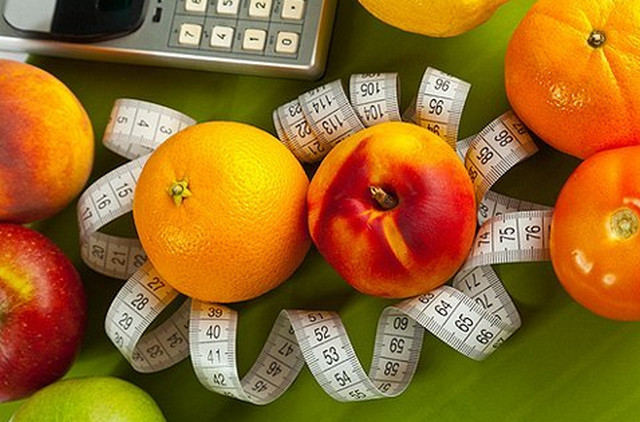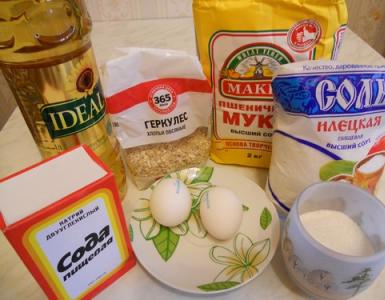How to calculate calories by 100 grams. Preparation of recipes for ready meals. The recipe calculator. Recipe Analyzer
2) Now you need to find the calorie content of each product. If there is a package from the product, then I look at the calories on the package, if there is no packaging, then I take the calorie content, and for those products that are not on this site, google Caloric value. Typically, the caloric content is given per 100 grams of the product. And so, here's the calorie content for each ingredient in our recipe for 100 grams:
3) Now, based on the weight of each ingredient, consider the proportion of calories:
- seafood 500g Х 124 kcal / 100 g = 620 kcal;
- cherry tomatoes 200g X 20 kcal / 100g = 40 kcal;
- grated tomatoes 60 g X 12 kcal / 100 g = 7 kcal;
- garlic 5 grams X 149 kcal / 100 g = 7 kcal;
- onions 50 grams X 41 kcal / 100 g = 20.5 kcal;
- vegetable broth 100g x 5 kcal / 100g = 5 kcal;
- paste 250g X 166.5 kcal / 100g = 416 kcal;
- olive oil 15 g X 898 kcal / 100 g = 135 kcal;
4) Now calculate the total weight of our dish and the total number of calories in it:
5) And now, in proportion, calculate the number of calories per 100 g of ready meals:
- 1250 kcalX 100g/ 1100 g = 114 kcalat 100g;
4 BASIC RULES FOR COUNTING CALORIES IN COMPLEX DISHES:
Complex dishes must be calculated during cooking. First, the total caloric content of raw foods is calculated. Next we weigh the pan in which the dish will be brewed. Next, weigh the finished dish with the pan. From the received weight we take away weight of a saucepan. Thus, we know the weight of the prepared dish.
Separately, it will stop on cereals, pasta and legumes - Due to water, these dishes are ready to be expanded in bulk and volume (boiled). For example, 100 g of rice cereal when cooking becomes 300 g of rice porridge. Porridge increased in weight by 3 times. Hence, the caloric content of 100 g of boiled rice porridge will be 3 times less than the calorie content of cereals, i.e. 303 kcal / 3 = 101 kcal. If the pasta increases in weight when cooking 2 times, then the caloric content of the boiled pasta will be 2 times less than the dry ones. If the beans boiled up to 1.5 times, the calorie content of 100 g of ready beans will be 1.5 times less, etc. Here the rule is: how many times the mass of the bulk product increases with cooking, the caloric content of the finished product is so much less.
If in the process of cooking meat or fish broth the fat film is removed, then any meat broth - 20 kcal per 100 g, fish - 15 kcal per 100 g. Mushroom or vegetable broth - 5 kcal per 100 g. If during the preparation of the film is not removed, then the broth takes 20% of the calories of meat, fish, mushrooms, vegetables. To determine the caloric value, it is necessary to know the weight of raw foods, the caloric content of the product is determined by the weight obtained. The resulting caloric value is multiplied by 0.2. Further, the weight of the finished broth is recognized, the calorific value obtained is distributed over the entire weight of the broth.
It is necessary to weigh the fat, the calorific value obtained is multiplied by 0.2 (according to the average culinary formula, during cooking, the product absorbs 20% of the caloric value of the butter.) The exception is zucchini, eggplant, donuts, pancakes where 50% of the caloric content remains when roasted. , the calorific value obtained is multiplied by 0.5). It is important to record this figure separately. When the product is ready to know the weight of the finished (roasted) product. By the received weight we learn the caloric content of the product (as if this product is still raw). To the received caloric content of the product is added 20% (50%) of the caloric value of the oil on which it was prepared. The resulting figure corresponds to the caloric content of the finished (roasted) product.
Counting the calories of ready meals, as well as the amount of vitamins and minerals is not such a simple thing as it might seem at first glance.
A number of factors should be taken into account when calculating the calories of ready meals, namely:
The change in calorie content during the heat treatment of products.
If you do not take into account the change in caloric content of foods with different types of their cooking, you can incorrectly calculate the calories in the prepared dish.
For example, consider pork.
Calorie content of fresh pork per 100 grams of product is 491 kcal.
When frying without adding fat, pork loses 44% of calories ( fat "is heated"), i.e. the calorie content of a one-hundred-gram piece will decrease to 275 kcal. The difference is not less than 216 kcal.
If you do not consider heat treatment for each ready-made dish, this can lead to incorrect calorie counting in the daily diet, which will lead to non-compliance with the diet and principles balanced nutrition.
Here's an example of a small list of foods that change their caloric content when cooking:
- Liver duck - when frying without fat, caloric content decreases by 48%
- Chicken - 41%
- Turkey 32%
- Cod 26%
The change in caloric content occurs due to the decomposition of proteins, fats and carbohydrates into water and other constituent elements in the process of heating, due to the heating of the fat from the product and "volatilization" of it with water vapor.
In order to correctly calculate the changes in the caloric content of dishes during cooking, you simply need to use the application recipe calculator "My healthy diet".
Loss of vitamins and minerals in the culinary processing of products.
In the process of cooking, a lot of vitamins and minerals are lost. And take these losses into account without the help of the application "My healthy diet" does not seem possible.
For example, 100 grams of fresh dill satisfy your need for vitamin C by 100%. But if the dill is cut, then the loss of vitamin C will be 25% of its original quantity. If fennel is subjected to heat treatment, then already 50% of vitamin C will be lost.
Here are other examples:
- When cooking beef, kidney, veal, the loss of vitamin B2 will be more than 40%
- At frying of a potato 40% of iron are lost, and at frying of fish and meat - 20%
To take into account all the losses for all elements in the composition of the diet, you can in the application "My healthy diet".
Loss of weight of the prepared dish and use of water in cooking.
Let's look at all the examples.
Ask in any forum what is the calorie content of buckwheat?
You will be answered about 308 kcal per 100 grams.
You can count buckwheat very high-calorie product and do not start to cook delicious and useful cereal from it, but it's completely vain because buckwheat is rich in iron, magnesium, silicon phosphorus, vitamin PP and is a dietary product.
Let's determine what is actually the calorie content of buckwheat porridge. For this we will use our application "My healthy diet".
Let's make a recipe: 100 grams of buckwheat and 250 grams of water.
As a result of calculating the program's recipe calculator, the calorie content of 100 g of buckwheat porridge will be only 102 kcal.
Why is there such a big difference? Yes, because the water added during cooking was not taken into account in the recipe of porridge. The presence of water reduces the caloric content of the finished dish. The more it is, the calorie content per 100 grams of porridge is less. Porridge can be both friable and viscous. Even if you drain the water after cooking, still some products, for example pasta and cereals, are considerably boiled, i.e. absorb water and increase in volume and weight, so their calorific value per 100 grams of ready-made meals is several times less than the caloric content of the raw product. Therefore, when calculating the calories of finished porridge, or any garnish of cereals and pasta, it is best to use the recipe calculator of the application "My healthy diet". Another example. In the process of heat treatment of many products, their mass significantly changes in the direction of decrease. Loss of mass is mainly associated with loss of water. So beef during cooking loses about 50% of the water contained in it. The weight of potatoes during cooking is practically unchanged, but during frying it decreases by 30-60%, depending on the grinding and the methods of frying. And in this case the program "My healthy diet" is the best assistant.
All these factors affecting the changes in caloric content, the composition of vitamins and minerals, etc.in the course of cooking, now you can help to consider the application"My healthy diet."
Calculator of recipes in the application "My healthy diet" It has no analogues among other programs distributed on the Internet, because:
- When calculating the caloric content of ready-made dishes (recipes), its changes are taken into account in various types of cooking: cooking, frying, pripuskanie, stewing, boiling, etc.
- The loss of proteins, fats, carbohydrates, vitamins and minerals during heat treatment and even when cutting food is taken into account.
- It takes into account the loss of weight of the prepared dish and the use of water during cooking.
- And most importantly - you can specify the weight of the prepared dish and then its chemical composition will be determined as accurately as possible! After all, someone cooks soup for 1 hour, and someone - 30 minutes, and accordingly, while the loss of mass during the evaporation of water will be different, that is, the caloric content of soup and its chemical composition varies.
Calorie is a unit of energy. And under the calorie content of food is understood as the volume of energy that is released during the splitting of food molecules. That is, you ate some product that has a certain caloric value, which means that the body received a certain amount of energy.
If you get more energy than you spend, then your weight will increase.
If you get a little, and spend a lot, it means that the kilograms will go away.
Therefore, the calorie content of the dish is very important, if you need to lose weight, just stick proper nutrition or build muscle.
In individual products this value can be ignored. It is listed on the package, and to find out information about other products, it is enough to look at the Internet (there are many calorie tables).
But if you are preparing a prefabricated dish, this amount will have to be counted.
- Instruments
- Important nuances
- What else do you need to know about counting
- amount
- Reviews and comments
Instruments
First you have to acquire some devices:
- kitchen scales;
- paper;
- a pen;
- calorie tables;
- calculator;
- program for calculating calories.
Scales choose electronic. They will show the exact weight, although the error of 5 grams in one direction or another can be. It's good if there is a container reset button on the scales.
Special tables can be found on the Internet or bookstore. Please note that the numbers may vary slightly. But do not worry, this is an insignificant difference.
Important nuances
All kitchen utensils should be weighed in advance. It will be easier later. Remember that near water, salt, spices 0 kcal. However, water adds weight, so the total value will change. The more water, the less calories in 100 g.
If you have already calculated what the caloric content of a particular dish is, you do not need to recount it any more. Just write down this number and the number of ingredients. Of course, if the composition changes at least one product, the testimony will be different. In the end, you will have almost all the basic recipes. Then the time for the calculation will not need to be spent.
And grams = V calories

100 grams = X kcal
A gram is the total weight of the prepared dish, expressed in grams;
In kcal - this is the total calorie content of the product in the prepared dish.
To count on this formula is easy. We must decide the proportion that we have made. Two digits on the diagonal are multiplied by each other, and then we divide by a digit that is diagonally with X. That is, the number of calories in 100 g = V × 100: A.
Calculate the calorie content of the prepared dish
We look at the table: in 100 g of rice contains 330 kcal. We take 300 grams of rice, so the calories will be 990. To find out, we are 330 × 3. Since we do not add anything else besides water and salt, it means that this value will remain within 990. When the porridge is cooked, its mass will be 900 g. Now we will calculate.
900 g of porridge = 990 kcal
100 g of porridge = X kcal.
Hence, 990 × 100: 900 = 110 kcal.
It turns out that in 100 grams of finished rice porridge there are 110 kcal.
For example, we have meat, carrots, potatoes, basil, garlic, dill and chili pepper. First weigh the raw foods.
Happened:
- meat - 300 g;
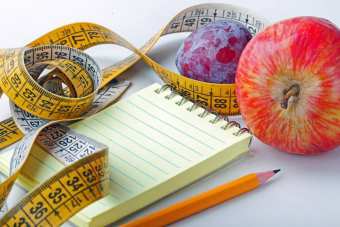
- carrots - 50 g;
- garlic - 30 g;
- potatoes - 700 g;
- basil - 5 g;
- pepper-chili - 10 g;
- dill - 5 g.
Add all the grams, it turns out 1100 grams.
In the same way, look at the table for each ingredient and add up all the calories. It turns out 1198 kcal.
The finished dish contains 1050 g, because some water has evaporated. Since water does not contain calories, the total quantity is preserved.
Now consider the formula:
1050 g of soup contains 1198 kcal
In 100 g of soup - X kcal.
1198 multiply by 100 and divide by 1050. It turns out that 100 grams of soup contains 114 kcal.
What else do you need to know about counting
Correctly count the calories during cooking and frying:
- if you cook meat, then you can safely take 20% of calories, as this part goes to the broth. Therefore, the meat itself after cooking will contain 20% less calories;
- when you cook fried foods, note, 20% of the oil is absorbed into the food. This refers to meat. A flour products, vegetables absorb almost 100%. Therefore, consider the oil when calculating;
- if you cook compote, and it will be eaten with fruit, then consider 100% of the calorie content of the fruit. And if only the liquid part, remember, it takes only 30% of the fruit. So weigh raw fruits, find out the calorie content. And then the resulting should be multiplied by 0.3, then learn the weight of the liquid and the caloric content will be distributed for the whole compote.
Why count the calories of foods
Someone thinks that this is an unnecessary and uninteresting process, someone - that it is necessary, and someone thinks that it would be necessary, but very difficult.
Of course, there are no difficulties here. Just need to get used to this process. And in the course of time you will not even have to count, since all the main dishes that you are preparing will already be calculated by you.
As for the arguments in favor of counting:
- there are no prohibitions on certain foods. You can eat anything you like, but in a certain amount;
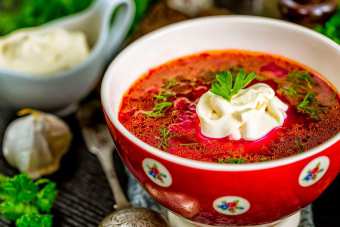
- if you lose weight, this method is easier than hard diets;
- a habit of conscious nutrition is formed. We understand how much we actually eat;
- when losing weight, the result is visible after a short time. If you continue the process after losing weight, it will continue.
amount
In order for the body to function properly, the metabolism was not disturbed, extra pounds were not added, a person should receive 2500-5000 kcal per day. The exact number depends on the loads, body build, climate.
Of course, if you want to lose weight, reduce the calories consumed, but not lower than 1200 per day.
All foodstuffs have a certain energy value.
We all know that the energy value of different foods is not the same.
Here is one of the most complete tables of caloric content of food.
You will become acquainted with the energy value, as well as the composition of the main food products. Data are given in kcal, as on the labels of most of the food we buy, their energy value is indicated in these units.
All data are given per 100 grams of the product, except for the section McDonalds, where the data are given per serving.
To count or not to count?
Calorie counting, as a weight loss method, is fairly well known. Attitude to it is often ambiguous. Very many consider it an effective and effective method of weight loss, and someone, on the contrary, is confident in its inefficiency. Let's look at this in detail in this issue.
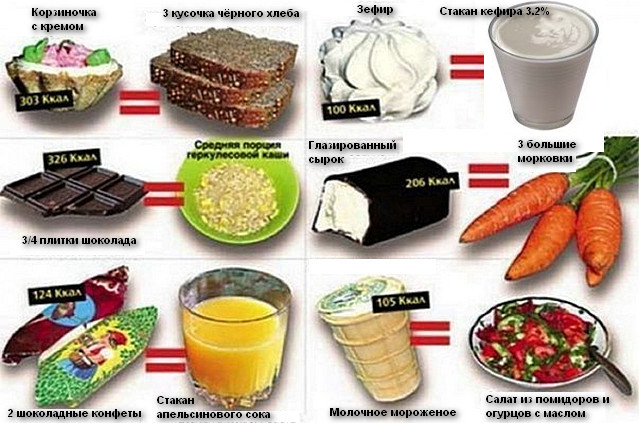
What are the main arguments of the opponents of the calorie counting method?
- Counting calories is difficult. A surprising argument for me, to calculate calories, you need knowledge in mathematics at the level of 3 classes and understanding of a simple sequence of actions. If for someone it is difficult, then the question here is not in the method itself, but in the motivation. Any action requires effort, and we commit them only when the result is of real value to us.
- Count calories long. This is not true! Planning for your daily diet takes no more than 10 minutes a day. Just 10 minutes a day to solve your problem. Tell me, which of us can not distinguish this time?
- If you count calories, you need to lead a half-starved lifestyle. Another great misconception. To get the desired result in the form of a shed weight, it is enough to switch to caloric content in the range of 1100 - 1200 calories per day. With this diet, your diet can be balanced, and hearty, and tasty.
- When calculating calories, you need to abandon your favorite foods. Not again! All your "yummies" will stay with you, and you can enjoy your favorite products, while not being afraid to gain weight. This method assumes that you can not ban any product. You can do whatever you want, the prohibitions only increase the desire.
- If you started calculating calories, then you need to lead it all your life. This is not the case, consider caloric intake only during a period of weight loss. After two weeks of calorie counting, you will automatically be able to determine the calorie content of foods and ready meals. This will happen necessarily!
What other arguments in favor of counting calories can be cited?
- A habit of conscious nutrition is formed, there is a real idea of how much we actually eat.
- Psychologically, using this method of weight loss is much easier than following rigid diets in which the list of products has already been determined in advance, and their volume.
- There are no bans on any products, which allows you to eat in the usual way.
- Gives a sufficiently fast and steady result, forms long-term skills of rational eating behavior.
It is possible that counting calories as a weight loss method will suit you as well!
Try it! Remember only that any weight-loss actions need to start with the answer to the question: "Why do I need this?". Only if you have found the right answer to this question, you can count on a long-term result.
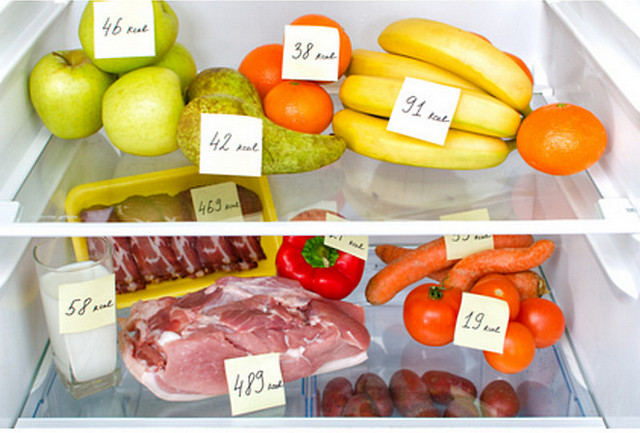
And now let's talk about how to count calories.
How to calculate the caloric content of products?
To keep calorie counting, you need to follow simple rules:
- For every dish that we cook, counting calories only once. We consider the calorie content to be the only correct one and we always follow it. And, it does not matter whether you or your mother-in-law have cooked borshch, the calorie content of borscht is always the same for you.
- Water, salt, spices caloric content does not have.
- In order to calculate the calorie content of the dish you just need to add the caloric content of all products, which are included in this dish.
Let's calculate the calorie content of vegetable soup for an example.
For its preparation we will need:
- Water - 2 liters or 2000 grams;
- Chicken Breasts - 300 grams;
- Potato peeled - 200 grams;
- Onions peeled - 100 grams;
- Carrots cleared - 100 grams;
- Bulgarian pepper - 100 grams;
- Cauliflower - 200 grams;
- Vegetable oil for roasting vegetables - 15 grams;
- Salt, pepper - to taste.
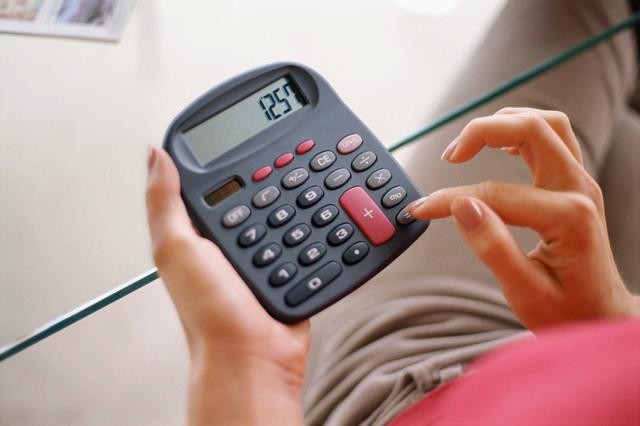
- Water - 2000 grams X 0 kcal / gram = 0 kcal
- Chicken Breasts - 300 grams X 0.95 kcal / gram = 285 kcal
- Potatoes peeled - 200 grams X 0,9 kcal / gram = 180 kcal
- Onion peeled - 100 grams X 0.43 kcal / gram = 43 kcal
- Carrots purified - 100 grams X 0.41 kcal / gram = 41 kcal
- Bulgarian pepper - 100 grams X 0.40 kcal / gram = 40 kcal
- Cauliflower - 200 grams X 0.18 kcal / gram = 36 kcal
- Vegetable oil - 15 grams X 8.97 kcal / h = 134.55 kcal
- Salt, pepper - to taste X 0 kcal = 0 kcal
In order to determine the calorie content of products, use information from the product labels, if this is not possible, use the calorie table given above
Pay attention, the caloric content is always indicated on 100 grams, and in calculation we take the caloric content of 1 gram of product, so it's easier to count. For example, the calorie content of 100 grams of potatoes is 90 kcal, and the calorific value of 1 gram is 0.9 kcal (90 kcal / 100 grams).
Now make up a simple proportion and determine calorie content in 1 gram of soup:
3015 grams of soup contains 759.55 kcal
1 gram of soup contains X kcal
X = 759.55 * 1/3015 = 0.25 kcal in 1 gram,
in 100 grams of soup, respectively, 0.25 * 100 = 25 kcal.
If you now thought it was difficult, do not be upset. There is nothing complicated here. It is enough to calculate independently once and everything will fall into place.
In addition, remember that we cheat every dish only once. How many meals are included in our daily diet? From 7-8 power, calculate them once and your calorie table is ready.
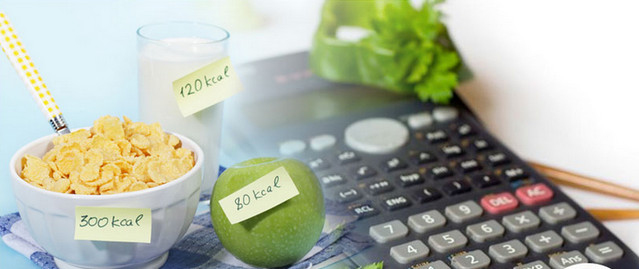
How to count calories - a few more rules
The weight of macaroni and all cereals during cooking increases on average by three times, so the calorie count for these products should be calculated per dry product. For example, in order to calculate the calorific value of 200 grams of finished buckwheat porridge cooked on water, you need to follow this principle:
200 grams of finished porridge is divided into 3 and multiply by 1 gram of buckwheat (3.47), resulting in 231.33 kcal in 200 grams of finished buckwheat porridge (200/3 * 3,47 = 231,33).
When calculating the caloric content of the broth, take into account that 20% of the caloric content of raw meat and 15% of the caloric content of fish passes into it.
When frying in oil, 20% of the caloric content of the oil, turn into the caloric content of the prepared dish
How many calories per day is required for your body? An unequivocal answer to this question is impossible to give, since the organism of each person is unique and requires its own calorie rate, the value of which is determined by a variety of external and internal factors:
- age;
- degree of activity, and the like.
At present, there is an incredibly wide variety of formulas according to which one or another specialist will calculate your daily rate. But, unfortunately, any of them allows you to get only approximate figures.
For adult middle-aged people values can range from 1,800 (for people moving only slightly) to 5,500 kcal (for people who engage in sports).
To use any of the methods you like, you will need a household scale. Without them, you can not calculate the exact weight of the product. In addition, you will need calculator to make the necessary calculations. The third necessary attribute should be purchased calorie tables, the benefit of the problem at present it is not.
For convenience of carrying out further calculations, it is desirable to simplify the task. Determine how many grams of cereals enter the glass, the oil in a tablespoon, and so on. It is clear that such information can also be found in the corresponding tables, but the spoons and glasses are different for everyone.
How to calculate the calorie content of a dish
Before you start cooking soup, carefully weigh all the ingredients in it, calculate the total calories for each product, then add the values.
After the soup is cooked, measure the volume of the resulting first dish. For these two values, calculate how many calories are in one ladle or in 100 ml of this dish.
It should be borne in mind that practically does not affect the caloric content of the dish, salt, citric acid and other spices.
How to calculate the calorie content of the prepared dish
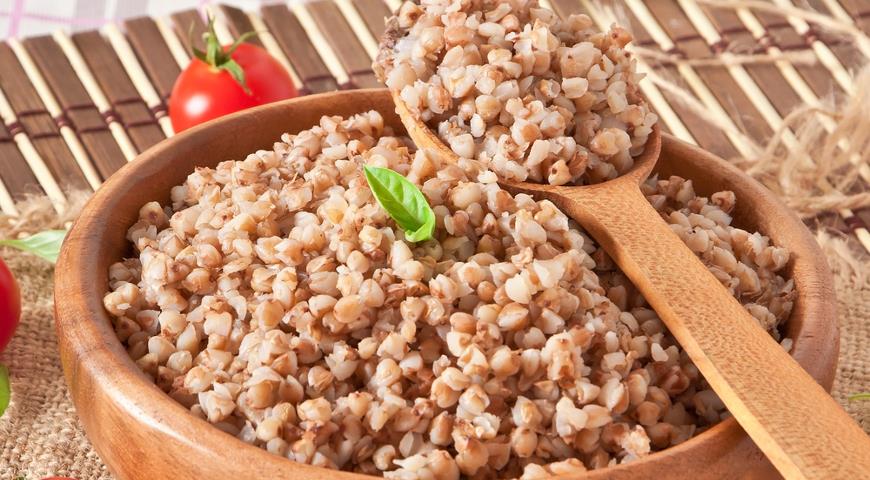
The actual weight of cereals and pasta by the end of cooking increases threefold (the average value). Therefore, when the caloric content of these foods is considered, it is a question of their dry weight before the beginning of cooking.
Example: you need to know the calorie content of buckwheat porridge, which was cooked on the water. Mass of serving - 200 g. Divide 200 by 3 = 66,6. Multiply the result by the calorie value 1 taken from the table buckwheat (3.13). The required value is 208.66.
Find on the Internet or buy plates with caloric content of products. With their help, you can calculate the calorie content of the prepared dish and will be able to control your food. Such a simple system will help to keep the figure and not give up your favorite dishes.


